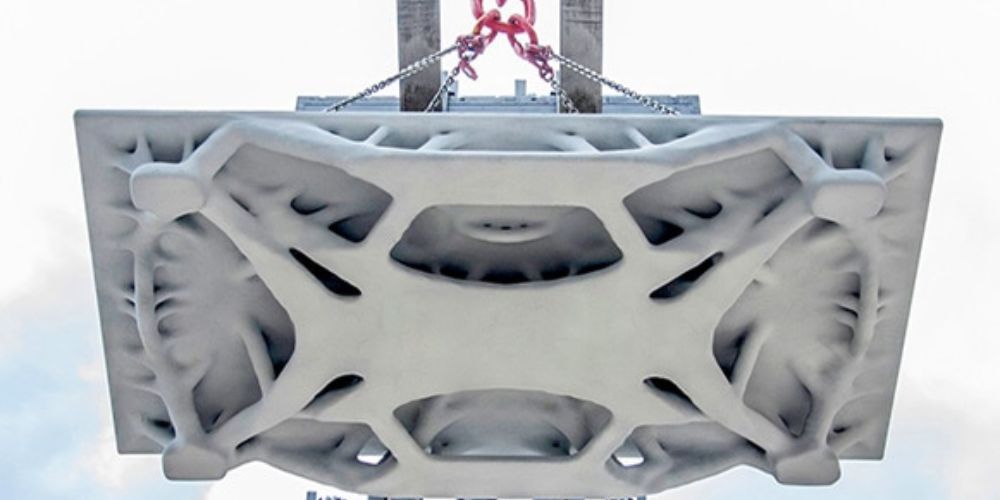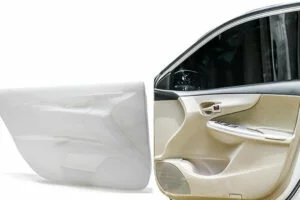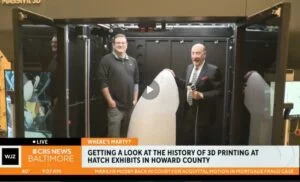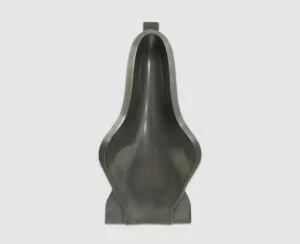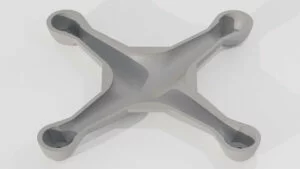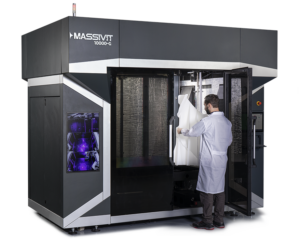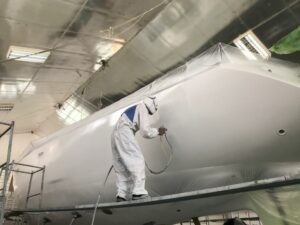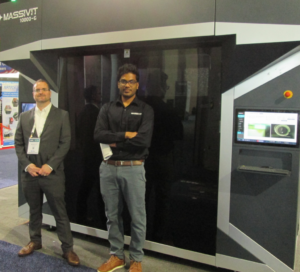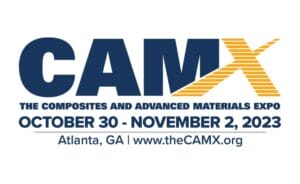How can large format 3D printing reduce concrete consumption towards more sustainable construction, make construction more cost-effective, and significantly enhance design freedom?
Milestones towards advanced & sustainable construction
There has been tremendous progress in the arenas of concrete construction and 3D printing. Some are going about digitization in this age-old industry by directly 3D printing concrete. Some create fiberglass or silicone molds for concrete, and I am sure a number of other exciting creative concrete construction developments are in the making, which we haven’t even seen yet. Like with most industries, the key questions for growth are: How can we build faster, cheaper, simplify complexity and do all of this more sustainably? Large format 3D printing potentially offers an opportunity to answer all these demands. But how can we introduce it – in a meaningful way – in an industry, which has had challenges when it comes to digitization?
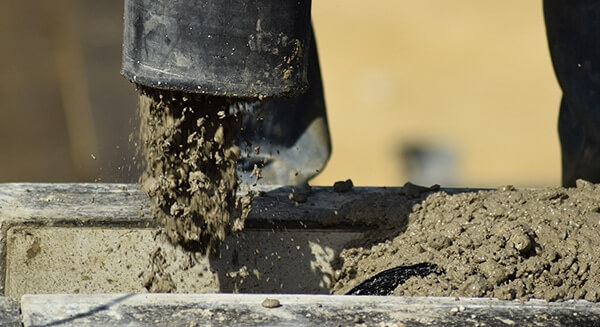
According to a McKinsey study, the level of innovation in the concrete construction industry has practically plateaued when compared to the manufacturing sector as a whole. Even the advent of construction-grade 3D printers is mostly just hype as there are very few systems that can adhere to the strict construction regulations in Europe, America, and other developed countries.
Below, I will touch upon approaches that utilize 3D printed molds for concrete in the construction industry which present an opportunity to create a meaningful impact. The first approach explores advancements towards more sustainable construction, lower costs and much higher productivity. The second approach aims for greater geometry freedom in creative concrete construction.
Why change existing processes? What factors can contribute to “sustainable construction”?
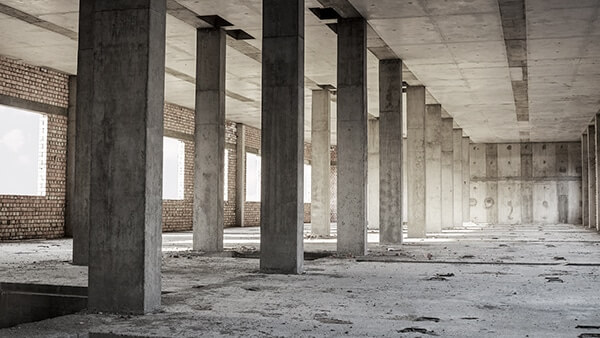
Concrete is responsible for 8% of CO2 emissions for the entire planet. According to Andrew Wheeler, the construction industry is also responsible for creating 40 percent of the world’s total waste. So efforts towards more sustainable construction are high on the agenda for concrete. There are two directions in terms of tackling this predicament: A) Conceiving concrete solutions which literally reverse the effect of CO2, such as what www.carboncure.com is working on; or B) Seeking solutions which reduce the amount of concrete needed in the first place, as demonstrated in this project executed by ETH in Zurich.
Whilst this ETH project is indeed inspiring – and according to ETH Zurich, reduces the use of concrete by 70% thanks to topology optimization of geometries – the costs for such a one-off project are still very high and do not yet enable us to touch the lives of a critical mass of people.
How to adapt concrete casting methods for more sustainable construction?
The second approach involves developing solutions that kick the ball in the right direction for sustainability but also provide new realms in design complexity. If the main goal of sustainable construction is to reduce the use of concrete by around 30-40%, we can already leverage existing, reusable, commercial solutions such as the Geoplast formworks shown below:
Unlike traditional silicone molds for concrete, this formwork is easy and quick to dismantle and does not even require a release agent. However, like with most formworks, it constrains architects and designers in terms of geometric freedom for casting concrete. It can only produce round, cylindrical columns.
Large 3D printers, however, allow us to produce large-scale joints that can easily and quickly enhance systems like these, both aesthetically and cost-effectively.
The above solution incorporates specific joints produced with Massivit printed concrete casting molds for selected areas. This becomes cost-effective as it only requires a small amount of 3D printing materials. It also provides exponential design benefits in terms of geometry freedom for columns, slabs and walls.
This way, the result is an optimized structure with the same overall strength, using far less concrete. The ability to produce hollow joints and end parts allows for minimal use of printing materials as well as overall reduced use of concrete by creating more efficient structural elements.
Design-friendly with minimal waste – Advanced concrete construction
It is also very straightforward to create disposable molds for plaster and concrete by utilizing thin shells. When compared to sand molds, it is far easier to handle lightweight plastic shells, which are also translucent in order to see inaccuracies during pouring. What is vital to understand is that most companies or manufacturers demonstrate the final result but neglect to expose other intermediary steps in the process which can make production significantly easier. One of the key benefits of the Massivit 3D printing technology is the limited amount of support structures required during production. This significantly adds value towards a more sustainable construction solution.
One of its software features goes one step further and is pivotal when it comes to the quality of the final output. The user is able to toggle between creating micro support on the outside or inside of the mold, depending on the end result they are aiming for.
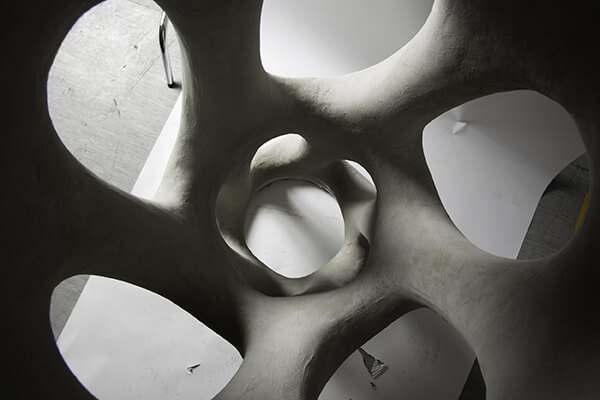
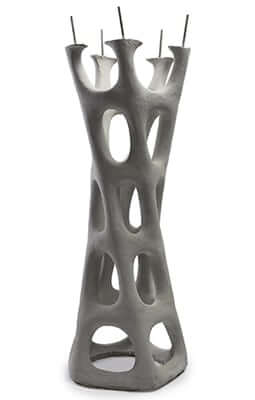
Complex concrete shapes created with molds made on Massivit printers.
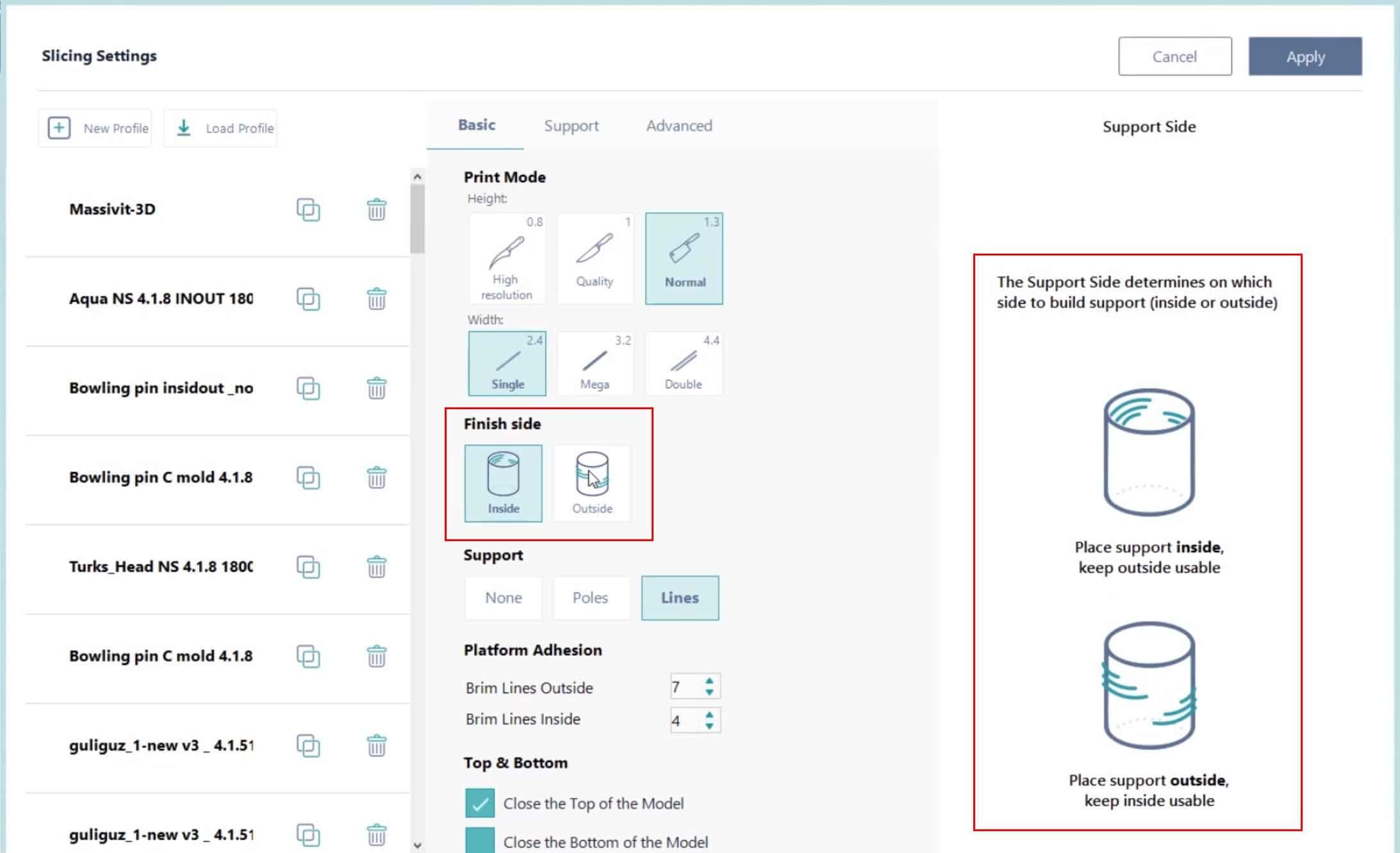
Massivit SMART software feature, enabling creation of micro support either inside or outside the part.
This allows for inspiring new cement mold ideas.
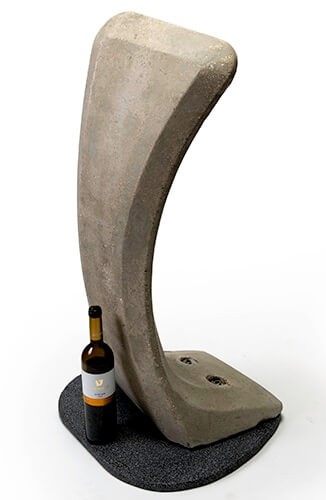
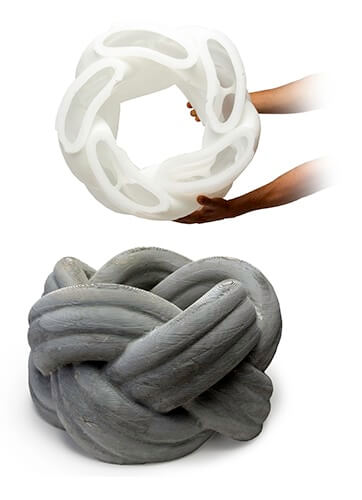
What about construction regulations?
Construction-grade additive manufacturing systems that directly print concrete structures are, for the most part, far from meeting the strict regulations required in construction across the globe. In contrast, 3D printed molds provide a myriad of environmental and design benefits, without needing to comply with local regulations.
Social complexities of advanced concrete construction
Whilst most look at 3D printing from the engineering perspective and focus on its inherent geometric freedom, I challenge people to fully understand the complexities of the industries in which they wish to gain traction, with 3D printing. The innovation in the construction industry has not been plateauing without a reason for decades. If you dive into any concrete construction magazine, you’ll be exposed to a complex maze of regulations, politics, stakeholders, and lobbyists.
The Greater Good
3D printing concrete does gain a lot of momentum in the media, but if it became a threat to existing jobs, it would have a tough time creating an impact. In order to truly create a meaningful impact on the gigantic concrete construction industry, one must be able to find solutions which add value to as many beneficiaries as possible in order to gain traction.


